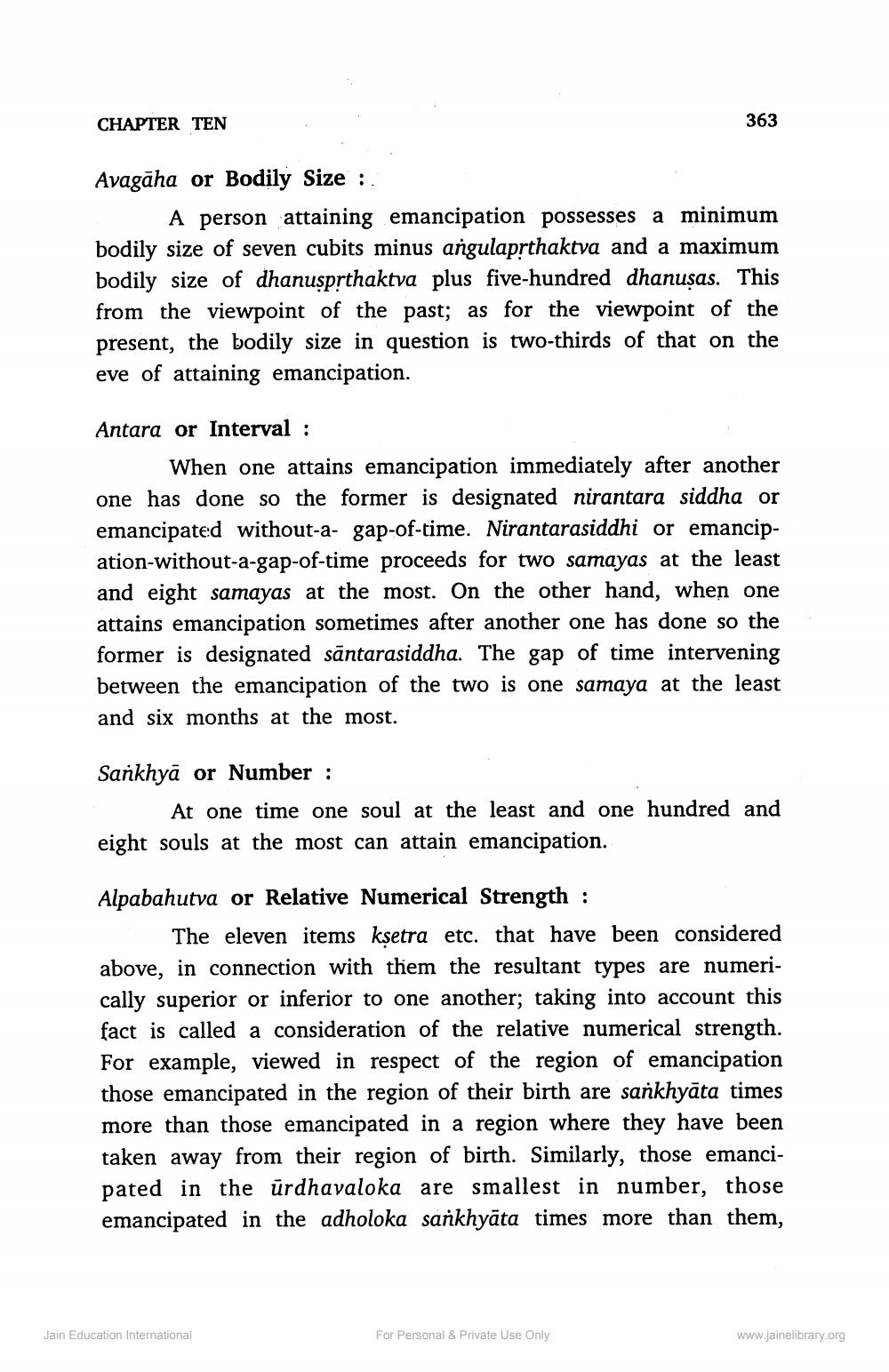________________
CHAPTER TEN
363
Avagāha or Bodily Size :.
A person attaining emancipation possesses a minimum bodily size of seven cubits minus angulaprthaktva and a maximum bodily size of dhanusprthaktva plus five-hundred dhanusas. This from the viewpoint of the past; as for the viewpoint of the present, the bodily size in question is two-thirds of that on the eve of attaining emancipation.
Antara or Interval :
When one attains emancipation immediately after another one has done so the former is designated nirantara siddha or emancipated without-a- gap-of-time. Nirantarasiddhi or emancipation-without-a-gap-of-time proceeds for two samayas at the least and eight samayas at the most. On the other hand, when one attains emancipation sometimes after another one has done so the former is designated sāntarasiddha. The gap of time intervening between the emancipation of the two is one samaya at the least and six months at the most.
Sankhyā or Number :
At one time one soul at the least and one hundred and eight souls at the most can attain emancipation.
Alpabahutva or Relative Numerical Strength :
The eleven items kşetra etc. that have been considered above, in connection with them the resultant types are numerically superior or inferior to one another; taking into account this fact is called a consideration of the relative numerical strength. For example, viewed in respect of the region of emancipation those emancipated in the region of their birth are sankhyāta times more than those emancipated in a region where they have been taken away from their region of birth. Similarly, those emancipated in the ürdhavaloka are smallest in number, those emancipated in the adholoka sankhyāta times more than them,
Jain Education International
For Personal & Private Use Only
www.jainelibrary.org




